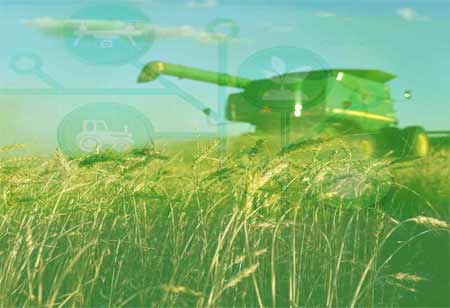Thank you for Subscribing to Agri Business Review Weekly Brief
Digitalizing Agriculture With Mobile Apps
There was a time when technology and agriculture were at opposite ends of the value chain spectrum.

By
Agri Business Review | Monday, October 17, 2022
Stay ahead of the industry with exclusive feature stories on the top companies, expert insights and the latest news delivered straight to your inbox. Subscribe today.
Modern farming technology fluctuates in terms of the application by nature of the development level of a country.
FREMONT, CA: There was a time when technology and agriculture were at opposite ends of the value chain spectrum. Not anymore. Today, we have ample evidence to substantiate the role of technology in agriculture and point to its irrevocable dependency on farming operations.
Nowadays, many farmers are developing an organic food e-commerce platform for themselves to interact directly with customers or the B2B industry.
How Mobile Seeped into Agriculture?
Thanks to the scale of unparalleled, accelerated industrial development, agricultural apps have found cross-fit applications for each step of the food production supply chain. Human-rendered climate problems, naturally occurring soil erosion, fertilizer-induced mineral depletion, and the downgrading of the water table are some of the visible forces influencing agriculture.
Since the problems are interconnected, so should the guided means to resolve them. Once you consider this, it isn't inconceivable to see technology and agriculture growing closer to each other.
Modern farming technology fluctuates in terms of the application by nature of the development level of a country. For example, you are more likely to see agricultural apps used by food traders/suppliers in developing countries, as farm management is activated by manual labor. Whereas in advanced countries where on-farm activities are machine-driven, farmers have acclimated themselves to using apps for agriculture.
They understand the value addition with ground results that instantly materialize with apps for farming that give resource optimization, soil nurturing, time-saving, and more.
Benefits of Mobile Apps for Farmers
The growing reach of technology in agriculture can be observed all around us, and its positive impact is palpable.
• Apps for farming act as data enablers in geographies with poor ICT infrastructure. With smartphones getting inexpensive by the minute, marginal farmers can download and learn from ready-to-use practical guides and access active channels to purchase relevant tools.
• For those with considerable farm holdings, large-scale sensors can be installed on the field whose collective data can be accessed through app dashboards. The analysis could incorporate information per the nature of sensors, like vulnerable patches for pest infestation, a failing batch of crops, and nutrient inadequacy, among others.
• Geographical Information Systems (GIS) can be acclimated to a mobile-compatible app that can educate farmers on soil management practices to optimize crop production.
Trends for Farming Apps Proliferation
Smart agriculture is a widening movement that highlights how farmers aim to reform crop yields and returns. It brings to the fore the much glocal (global + local) role ICT will play in upscaling the business positives of farming. Product sales with consumer demand point to the billion-dollar market size that will continue to grow.
Any effort to transfer the regenerative power, not just of crops but also profits, back into the hands of farmers must start at the most widely reachable point for all, mobile phones. With the computing power of desktops locked in handsets, enterprise businesses can readily launch apps for agriculture that goal niche areas.
One such area of smart farming that irritates both the farmer's and investor's interest in this field is precision farming. It employs the Internet of Things (IoT) and Big Data Analytics to overcome traditional shortcomings such as labor shortages, unpredictable weather, and harvesting times. Investigating the variety of solutions of such modern technology used in agriculture, we can see the opportunity scope for apps.





